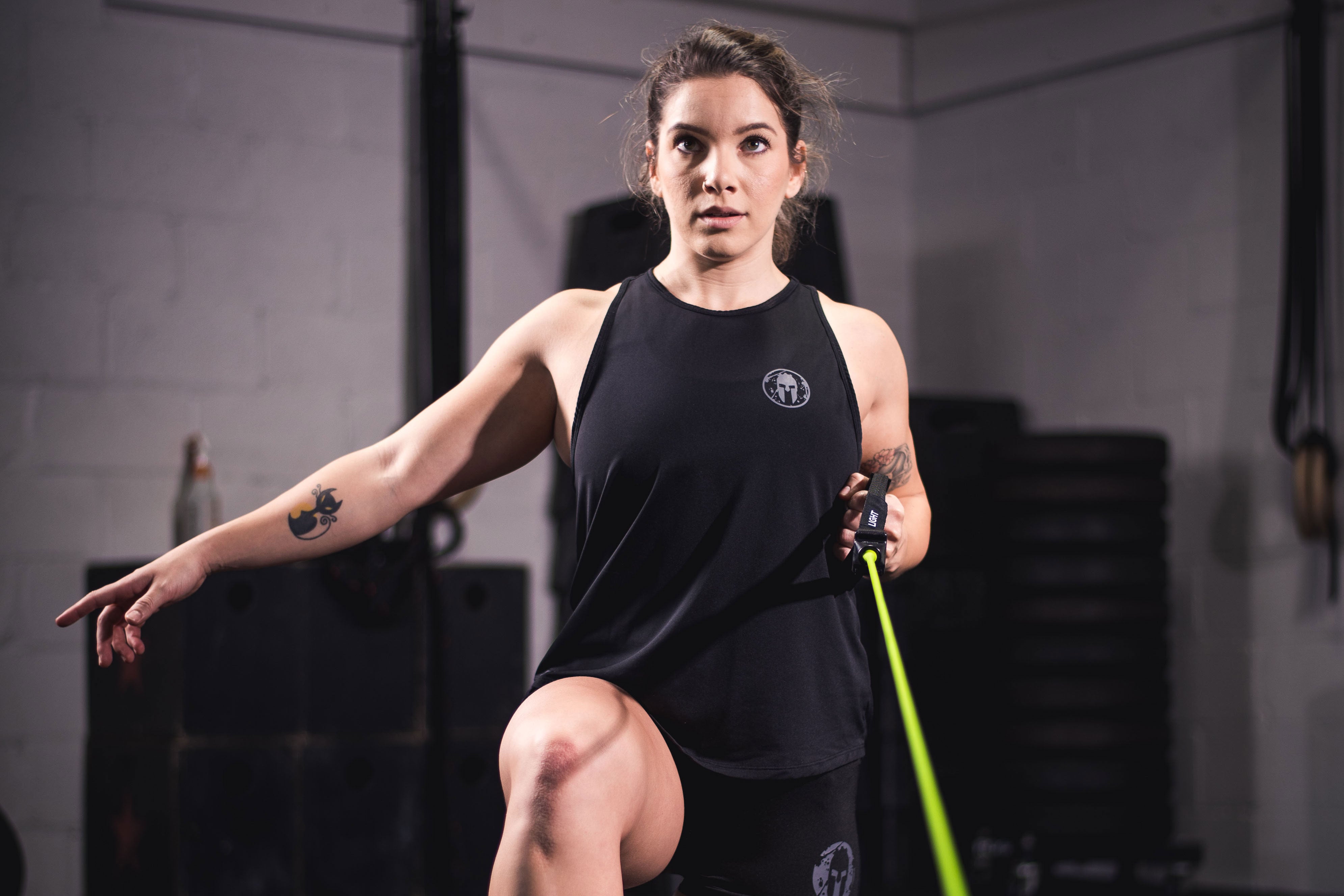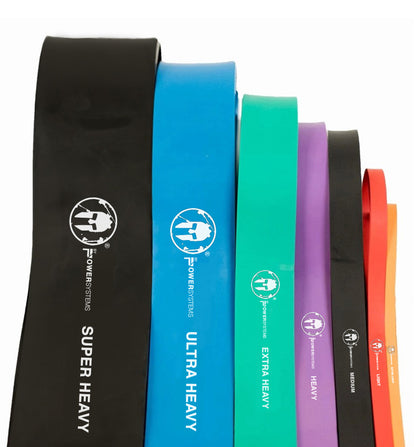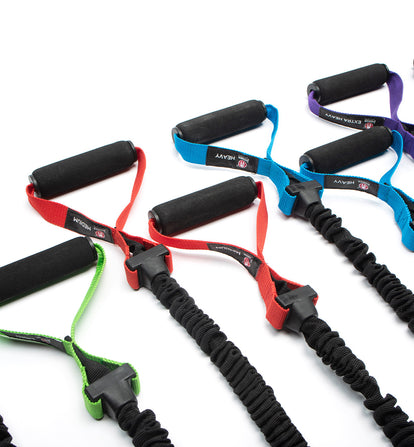Want to Get Stronger? Break Out the Bands

Strength is, by definition, a measure of how much weight you can move. Accordingly, it might seem obvious that the best way to become stronger is to lift heavier weights.
To be clear, this isn’t completely wrong. Progressive overload (gradually increasing the load as you get stronger) is one of the cornerstones of any good training program. That said, it’s not the WHOLE answer. In fact, it's not uncommon to get stronger by lifting less weight, or not using any weight at all.
Related: 4 Keys to Strength and Muscle Building
If progressive overload is part of the overall answer, here's another piece of the puzzle: resistance bands. There are several types of these bands, and several different ways they can help you get stronger. Some can be used in place of weights, while others act as an adjunct to weights. Not all exercises are created equal, so sometimes avoiding racking up the weight in favor of breaking out the bands is the best choice for your goals.
Using Bands to Assist Pull-Ups

Resistance bands can be used to effectively reduce your body weight while doing pull-ups (or chin-ups, or parallel grip chin-ups — you get the point). If you just can't seem to come face to face with that pull-up bar, loop the band over the bar. Then, either stand or kneel on the bottom of the band so that it effectively assists you in doing the pull-up.
There are two reasons you’d want to do this. If you’re not yet strong enough to do at least three pull-ups with good form, the bands will give you enough of an assist to at least get started.
Related: How to Use Exercises to Improve Pull-Ups The Right Way
Bands also come in handy for after training to failure. In this case, try the pull-ups without the band first. Once you can’t do any more (and we mean really can't do any more — no excuses), step into the band and do a few more pull-ups with an effectively lighter weight.
In either case, you’ll need a long, loop-style resistance band like our Spartan Strength Band. The ideal resistance level (click on “Tech Specs” to see the best fit for you) will depend on how you’re using the bands. If you can’t do pull-ups at all, choose a resistance equal to 40 to 60 percent of your body weight. Or, use an assisted pull-up machine to figure out how much help you need to be able to do 3 to 5 pull-ups.
If you’re using bands to extend pull-ups past muscle failure, you can use a lighter band — about 20 to 30 percent of your body weight. Note that if you kneel —rather than stand — in the band, it will stretch less and be less effective.
Working Out With Resistance Tubes

Covered Resistance Tube bands are a completely different animal. Instead of modifying other exercises, they effectively act as a substitute for dumbbells. These bands are extremely light and easy to travel with. (Although Spartans LOVE carrying heavy stuff, sometimes it's just not practical). And unlike free weights, bands are able to exert resistance in all directions — not just straight down.
Now, we're not saying Resistance Tube bands are better than dumbbells, but they’re certainly useful in some situations where dumbbells aren't.
You can use them for short at-home workouts to supplement your gym workouts, either for when you don’t have time to make it to the gym or as a form of active recovery. Or, bands can simply add a bit more variety to your training. Variety helps ensure that all of your muscle fibers are being worked adequately, but for many people it’s also helpful just to keep exercise fun and motivating.
Related: The At-Home Strength Band Workout for Your Arms
Our Resistance Tube bands are the most durable tube resistance bands on the market, and you’ll likely want two of them, as your strength will vary depending on the exercise. Look under “Tech Specs” again, and pick a resistance level that’s roughly equivalent to the dumbbell weight you can lift. Assume you’ll be working towards the upper-middle portion of the listed range: Treat the 9 to 34-pound medium band as about 25 to 30 pounds when making your selection.
Add Bands to Barbells to Accommodate Resistance
This last technique, accommodating resistance, is a popular strength-gaining tool among powerlifters. In short, you use a pair of resistance bands in place of part of the desired load while bench pressing or squatting by attaching the bands to the end of the barbell outside of the plates.
This makes the squat and bench press more effective because both movements have “sticking points” at the bottom of the motion. Bands exert more resistance as they stretch, so they eliminate this sticking point by effectively making the weight lighter at the bottom of the exercise and heavier at the top. This allows you to use more weight and even perform an extra repetition or two.
Spartan Strength Bands are once again the key piece of equipment here, but in this case you’ll need two identical bands. Aim to replace 20 to 40 percent of the total weight with band resistance. For example, if you bench 195 pounds, you’d want two of the medium (10 to 35 pounds) bands, which will exert roughly 30 to 60 pounds of resistance at various points in the movement. (And you’d lighten the plates by 40 to 50 pounds to compensate!) The bands provide variable resistance, so don't be alarmed if it takes a little experimenting to find your new working weight.

